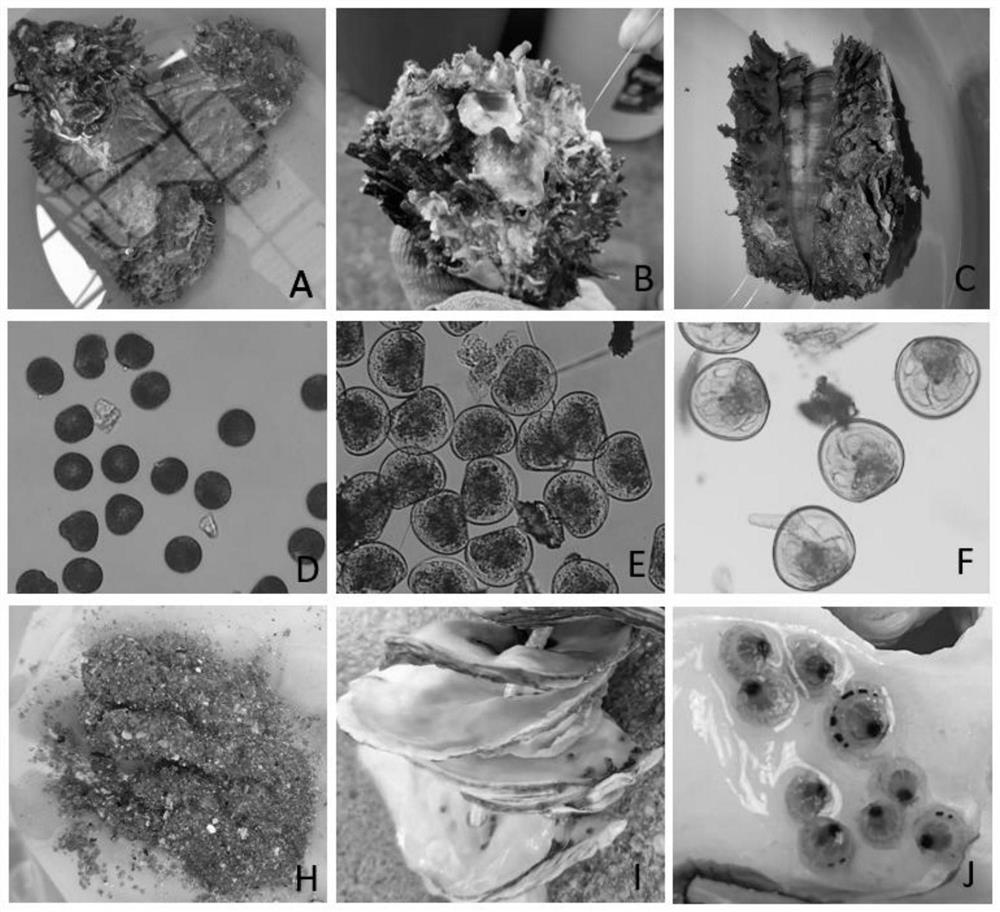Artificial breeding method of sea cauda
A technology of artificial breeding and sea chrysanthemum clams, applied in fish farming, application, climate change adaptation, etc., can solve problems such as the disappearance of sea chrysanthemum clams and damage to the stability and health of the ecological environment of coral islands and reefs
- Summary
- Abstract
- Description
- Claims
- Application Information
AI Technical Summary
Problems solved by technology
Method used
Image
Examples
Embodiment 1
[0026] Such as figure 1 Shown, the artificial breeding method of the sea chrysanthemum clam of the present embodiment comprises the following steps:
[0027] a. Collection of parents: On April 3, 2021, 30 2-3-year-old wild Jiehai chrysanthemum clams with good health and vitality were collected in the reef area with a water depth of 10 meters in the Luhuitou sea area of Sanya (the shell length is greater than 10cm). After removing the attachments on the shell, it is temporarily raised in the Hainan Tropical Marine Biological Experiment Station of the South China Sea Institute of Oceanology, Chinese Academy of Sciences. The seawater temperature is 28-30°C, the salinity is 34ppt, and the pH is between 8.0-8.2. The combined methods were used to identify the parents, and the results showed that they were all clams.
[0028] b. Promoting ripening of parents: artificially promoting ripening in the form of micro-inflation + micro-flowing water, with a water flow of 20m 3 / day / cyl ...
Embodiment 2
[0036] The artificial breeding method of the sea chrysanthemum clam of the present embodiment comprises the following steps:
[0037] a. Collection of parents: On May 3, 2021, 40 healthy and undamaged wild Jiehai chrysanthemum clams of 2-3 years old were collected in the reef area with a water depth of 10 meters in Lingshui sea area (the shell lengths were all greater than 10cm). After removing the attachments on the shell, it is temporarily raised in the Hainan Tropical Marine Biological Experiment Station of the South China Sea Institute of Oceanology, Chinese Academy of Sciences. The seawater temperature is 28-30°C, the salinity is 34ppt, and the pH is between 8.0-8.2. The combined methods were used to identify the parents, and the results showed that they were all clams.
[0038] b. Promoting ripening of parents: artificially promoting ripening in the form of micro-inflation + micro-flowing water, with a water flow of 20m 3 / day / cyl (3000L / cyl), after a month of ripening,...
PUM
 Login to View More
Login to View More Abstract
Description
Claims
Application Information
 Login to View More
Login to View More - R&D Engineer
- R&D Manager
- IP Professional
- Industry Leading Data Capabilities
- Powerful AI technology
- Patent DNA Extraction
Browse by: Latest US Patents, China's latest patents, Technical Efficacy Thesaurus, Application Domain, Technology Topic, Popular Technical Reports.
© 2024 PatSnap. All rights reserved.Legal|Privacy policy|Modern Slavery Act Transparency Statement|Sitemap|About US| Contact US: help@patsnap.com








